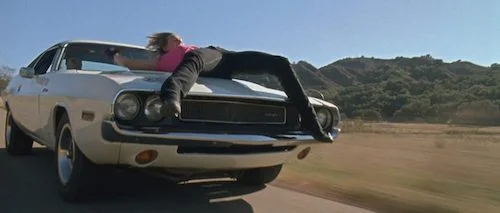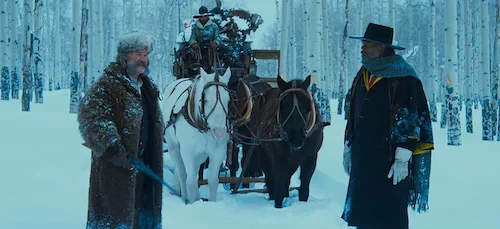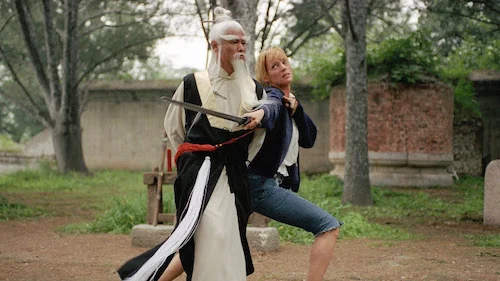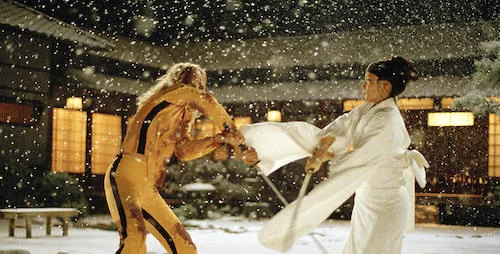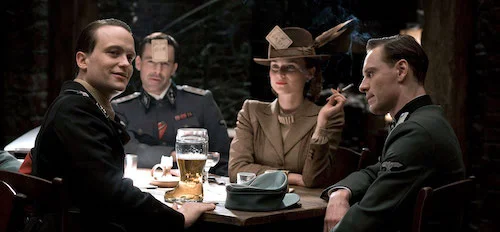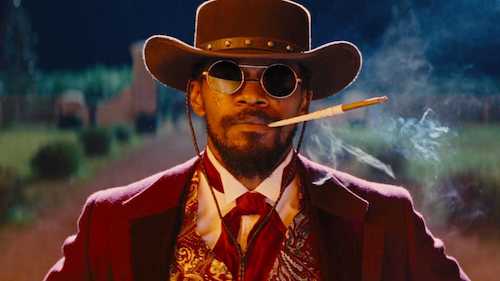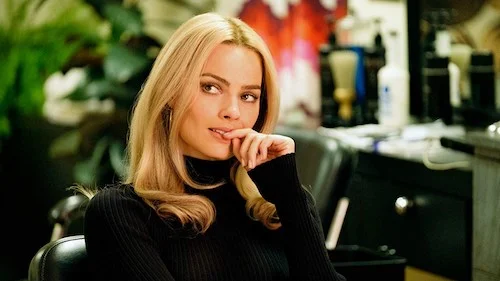Ranking Every Quentin Tarantino Film (Like Everyone Else Does)
We may as well rank every Quentin Tarantino film, because everyone else is doing it.
Quentin Tarantino is usually a beginner auteur for rising cinephiles. His style is very easy to cling onto, because he knows how to toy with his audience. Once you learn more about film, you grow to realize that Tarantino pulls from many styles, eras, or specific films. I liken Tarantino to a DJ, who interpolates or samples many sources and creates a new final result (this isn’t the biggest stretch, considering Tarantino himself is a hip hop fan). His creation of tension comes from the wild west. His style comes from French New wave. His dialogue is straight out of Howard Hawks screwball comedies; the foul language may be from the New Hollywood era, mind you.
My first exposure was Kill Bill Volume I when I was a tween. Action films were my obsession at the time, so it only made sense. I just knew there was something different about this film, compared to the others I was watching at the time (especially xXx, Spider-Man and the like). The deeper into film I got, the more I understood all of the intricacies of his works. Well, with the release of Once Upon a Time in Hollywood (which, in case you weren’t pelted over the head with it before, I adored), it’s time to see where his major features stand. I will only include full lengths that he himself directed (no scripts for other directors). And away we go!
EVERY ENTRY WILL LIKELY CONTAIN SPOILERS FOR THAT FILM. YOU HAVE BEEN WARNED.
10. Death Proof
Yeah, we have to talk about Death Proof. It almost isn’t fair, because the film itself is meant to be a full focus on midnight movie marathons (this was paired up with Robert Rodriguez’s Planet Terror for the Grindhouse project). That means the film was meant to just illicit an experience, and it also has some weight leaning on another film that viewers now may not even watch it alongside with. Nonetheless, it’s got some aesthetic worth, stellar stunt coordination, and the odd moment that makes you recall “ah yes, this is the Kill Bill guy. I see some value here). Otherwise, it’s easily his weakest feature length film, but, in all honesty, it’s pretty decent for a worst film in a career.
Most Signature Tarantino Moment: THAT accident scene. Shot with Kenneth Anger’s Scorpio Rising in mind, and b-picture bloodbaths for encouragement, we get a multi-perspective reenactment of a disturbing scene. With celluloid grain, practical effects grit, and a Wilhelm scream to sell the experience, we can’t say that Death Proof wasn’t at least well intentioned.
9. The Hateful Eight
Conceptually, this is a fantastic narrative. Eight worthless heathens are trapped in a small cabin during a never ending blizzard, in the heat of a John Wayne era western. Agatha Christie’s one-by-one fatality rate gets introduced, as bigotry rages amongst those pointing fingers as to who is killing the others. This is definitely one of Tarantino’s more ambitious films, since it includes a fully fledged score instead of interlaced popular songs (the score, obviously, by Ennio Morricone) and it relied solely on his merits as opposed to his pop culture influences. Well, it drags on a bit, lacks the replay value his films usually boast, and can be less magical than usual. The 70mm roadshow screenings were a treat, though, and we do get some great elements (like Daisy Domergue, the chilling cinematography, and the occasional enticing moment).
Most Signature Tarantino Moment: When the tables turn with Daisy. A criminal that seems like a dimwit ends up being the brains of a whole operation. Jennifer Jason Leigh is one of those performers that just knows how to work a Tarantino screenplay, and she steals every scene she is in. When she ends up being the mastermind, she steals the entire picture. We love to despise her.
8. Kill Bill Volume II
I know Tarantino has said that Kill Bill is just one film split into two parts, but I am still going to tackle both parts separately (don’t worry, Volume I isn’t much higher up anyway). Is Volume II as boring as some people say? I’d argue no, because I honestly believe too many people were comparing it to the first half. I can see why, though, because Volume II works much better when latched onto the previous part. More story driven, more tension, and more waiting, Volume II is a different animal almost entirely. It isn’t like the vastly incomparable Lady Snowblood sequel Love Song of Vengeance, but it’s noticeable enough. Volume II is both a prequel and a continuation that may not have aged extremely well, but it’s still a nice narrative experiment.
Most Signature Tarantino Moment: Actually meeting Bill. Having The Bride and Bill sit down and discuss matters before trying to kill one another is so Tarantino. No one’s got an advantage. No one is stalling. They’re simply wondering what happened. We learn even more about their dynamic, sense their past and current chemistries, and wait for that first blow from either side to happen.
7. Kill Bill Volume I
This first part goes straight to the heart, instead of the more literary second half. More blood. More fights. More speed. Again, as a separate element, that means it relies more on Volume II to stand the test of time. On its own, Volume I is a great one time experience that may need a bit more collective oomph to warrant repeated viewings (outside of those wanting a fantastic array of violence, in which Kill Bill is an excellent choice). It was Tarantino’s first film in the new millennium, during the shift of America’s tolerance for graphic content. It substituted nothing. Dare we even compare which scenes are the most bloody?
Most Signature Tarantino Moment: Ah, breakfast time. I feel like other Tarantino films capture tension during his times of malice much better, but the one part in Kill Bill that stands out the most is the quickest fight. Loaded banter, glares set to kill, and one chance to overtake the other, we see The Bride get a taste of what is coming, all while having to console a daughter witnessing the death of her mother.
6. Jackie Brown
More people now are turning towards Jackie Brown than they did before. Not that I would argue that this film is Tarantino’s masterpiece, but I wonder what has made this work age a little better. Is it the introduction of past cinema legends to a new demographic (especially Pam Grier and Robert Forster)? It can’t be that, because that would hardly matter twenty years later. Is it the full embodiment of Tarantino’s fixation on style? It was the first blaxploitation inspired work for Tarantino, and he grew up watching many of the iconic films of that era. Whatever it is, it feels like Tarantino was starting to believe his own hype around this time, and decided to do whatever he damn well pleased with his films. The result is Jackie Brown: a daringly cast blast from the past.
Most Signature Tarantino Moment: Brown shuffles through her record collection, and Max Cherry inquires as to why she hasn’t switched over to compact discs yet. She puts on the Delfonics, and we just soak the image of her feeling free in. It’s a romantic scene that has only aged better with time: records are back in, and we feel even more linked with the titular character.
5. Inglourious Basterds
Ten years later, and Inglourious Basterds has gotten only slightly worse (with its maybe too many plot threads having to rely on one another). Otherwise, the film is still spectacular a decade later. Having the Nazi regime die (literally and symbolically) at the hands of the art they once ridiculed in hate filled galleries is just such a clever concept. With so many groups willing to die sacrificially for the greater good, the climax is a willing cluster of blood, explosions, and justice. If anything, I would argue that Basterds exercises Tarantino’s obsession with twisting the knife (or shoving fingers into bullet wounds, mind you) when it comes to slow burning tension (which he learned straight out of Leone films, especially with the opening inspired by The Good, The Bad, and The Ugly).
Most Signature Tarantino Moment: Since we already briefly brought up the opening, we have to discuss the other grossly engaging stand off: the bar sequence. This thing lasts an extremely long time, and involves informants hidden amongst officers getting their drinking games going. An all too smart gestapo catches on to one of the hidden British plants, and a racy activity turns into a Mexican standoff. Within seconds, the entire bar (for the most part) is mowed down, and the lively party we once saw is all but dust, wooden shards, and stiff, crimson corpses now.
4. Django Unchained
Outside of Tarantino’s hilariously misplaced cameo (“Hew ta fock ees Smeety Buckawal?” is not eligible for best Australian accent attempt, ever), Django Unchained is a relentless mixture of spaghetti western heart and blaxploitation spirit. Tarantino toys with circumstance a lot, and this film showcases some of the finer examples (who is where at which exact moment; it’s all important). Its current pop culture infusions may be a tiny bit jarring at times (Rick Ross’s feature song still takes me out of the film just a teensy bit), but that’s the price one pays for trying to blend two starkly different genres together. Oh well. Django Unchained is a reference to two breaking points in counter cultures with a modern lens, and it’s brutal.
Most Signature Tarantino Moment: Leonardo DiCaprio has worked with the director twice now, but he basically knew the way to go with this film. During his sneering monologue over dinner (a racist, deeply insulting tirade about “biological” facts), DiCaprio accidentally sliced his hand open with a broken glass. He keeps going, and turns an already stomach churning scene up to the next level when he smears his blood on Kerry Washington’s face. Luckily, the urban legend has been dispelled, and the blood on her face is revealed to actually be fake blood used in a take made after DiCaprio was already bandaged up.
3. Once Upon a Time in Hollywood
It’s nice to see Tarantino being vulnerable. With one of his final feature films, Tarantino discusses his challenge to keep up with his greatest passion for cinema as he gets older (as heard through Rick Dalton’s synopsis of the Western novel he is reading). It’s his Dear Basketball moment: an admittance of the road nearing its end. Once Upon a Time in Hollywood naturally became his most moving film, full of shots framing Sharon Tate to protect her (and a film that fully breaks reality to imagine her Hollywood ending: a “what-could-have-been” had something been slightly different that night). It’s still signature Tarantino, full of crass one liners and ridiculous violence. However, it uses its self-awareness not to hype its own worth, but to create a new reality: to utilize the Hayes code one last final time, bid the golden years adieu, and usher in the New Hollywood at the end of the ‘10s: a time that has softened up in mainstream cinema, naturally.
Most Signature Tarantino Moment: When Cliff Booth goes on his acid-induced dog walk, and the Polanski household blasts “Twelve Thirty” by The Mamas & The Papas, you see a rusty, olive car pulling up, and your stomach drops. In comes the clan of Manson family delinquents waiting to kill. Dalton comes out with his blender of margarita goodness and he gives the “hippies” a maniacal what-for at midnight. It’s a time bomb waiting to go off, with fantastic contrast utilized by the pop song (one of the finer times in Tarantino’s filmography, and he’s one of the best at doing this since Kenneth Anger’s innovation of this difunctional idea).
2. Reservoir Dogs
The film that started it all. At the very beginning, we see Tarantino himself giving a vile discussion about his interpretation of “Like a Virgin” by Madonna, and that’s all we need to know. Clearly, the guy was confident in his own capabilities from the get go, so he could get away with anything. Keep in mind the amount of budgetary limitations Reservoir Dogs sprints past with its creative decisions, because Dogs could only exist with a shoestring amount. Perfectly written ramblings that explore character typings better than exposition ever could was the ticket. Right away, we can tell that “Mr. Orange” was a goody-two-shoes, “Mr. Pink” was a snivelling twerp, and “Mr. Blonde” would kill his own wife if he felt like it. Toss in the non-linear scene set up, and we get a series of obscured confessions. At a time where “big twist” films warranted one viewing before they were toast, Reservoir Dogs only gets enhanced the second time around, because of all the tiniest of details that always matter (“Mr. Blonde”’s reaction to being called that instead of “Mr. Yellow” will always make me laugh).
Most Signature Tarantino Moment: I’m not going to include the “Stuck in the Middle with You” scene, because it’s always discussed and it isn’t the best moment in the film. I’m going with the final climax. Names are given away out of nervous slipping (we publicly find out “Mr. White” is actually Larry, for instance), covers are blown (Mr. Orange is declared a rat), and guns are pointed everywhere. It isn’t the longest of Tarantino’s stand offs, but it’s probably the most emotional, including an underrated performance by Chris Penn, whose character is devastated that his dad is being threatened. It’s a lot of feelings to take in at once.
1. Pulp Fiction
It seems obvious to place this film first, but so many films since have tried to be Pulp Fiction with zero results. Channelling the French New Wave movements that emphasize on character interactions and the spaces in between the action, Pulp Fiction upped the ante by doing this with a mess of a sequential order. Character arcs take priority over narrative, so you see characters die at certain points, only for them to show up “alive” later on. Much of the film is deeply symbolic as well, including having an action hero (Bruce Willis) destroy the old era of Hollywood (John Travola’s Vincent Vega). The film knew how to create mythos, from the insanely quotable lines down to the mysteries (what’s in the briefcase?). It’s a cinematic staple, because it took a plethora of risks and nailed every single one of them (even down to the deeply disturbing Zed scenes). It’s hip, offensive, idiosyncratic, and a game changer. Pulp Fiction is a singular movie experience, and it’s Tarantino’s finest achievement.
Most Signature Tarantino Moment: There are so many good answers, but I have to go with the Big Kahuna scene. Jules has just been enlightened by Vincent about how fast food is labeled overseas, so his appetite is through the roof. He goes through Brett’s final meal before he dies (how courteous; even death row criminals get to enjoy their last dishes), only to make fun of him and all of his friends. Things get heated when Jules busts out his gun and starts grilling Brett (pun intended). It’s one of the most quotable scenes in film history. It combines fear with hilarity and anticipation. It was a sneak preview of a promising career, and the rest of the film, even. We’ve learned not to say “what” after certain questions (especially not more than once). “Brad” did not have big brains after all.
Andreas Babiolakis has a Masters degree in Film and Photography Preservation and Collections management from Ryerson University, as well as a Bachelors degree in Cinema Studies from York University. His favourite times of year are the Criterion Collection flash sales and the annual Toronto International Film Festival.


